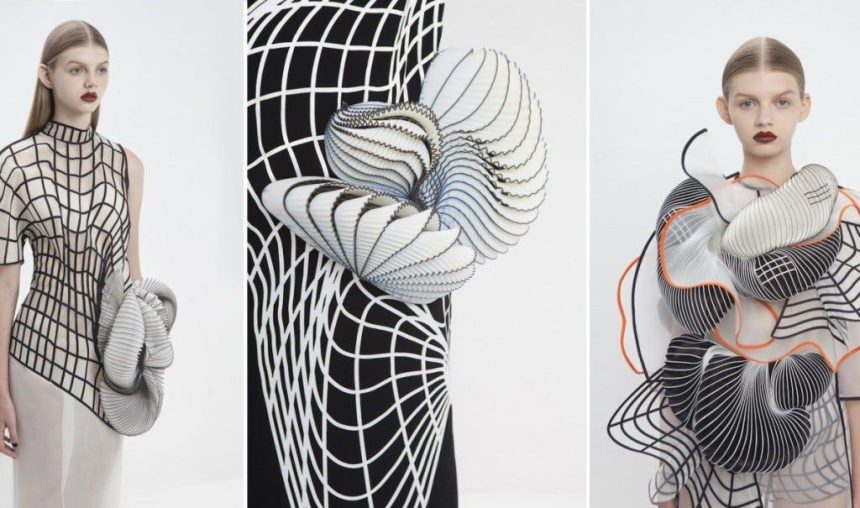Introduction:
The fashion industry has always been on the cutting edge of technological innovation. Various technological advancements have revolutionized the design, production, and presentation of fashion over the years. 3D modeling is one such ground-breaking innovation. The introduction of 3D modeling has had a profound effect on the complete fashion ecosystem, from ideation to final runway display. This blog will examine the transformative impact of 3D modeling on the fashion industry and how it has reshaped the fashion creation and presentation processes.
- Introduction:
- Conceptualization and Design:
- Virtual Prototyping:
- Exploration and Experimentation:
- Collaboration and Visualization:
- Time and Cost Efficiency:
- Virtual Fittings and Prototyping:
- Improved Collaboration between Designers and Manufacturers:
- Remote Collaboration and Global Accessibility:
- Customer Participation and Responses:
- Sustainable Production and Reduced Waste:
- Optimized Material Utilization:
- Conclusion:
Conceptualization and Design:
Traditionally, fashion designers would begin the design process by drafting their concepts on paper. This method allowed for creative expression, but it was difficult to visualize and refine designs. However, with the advent of 3D modeling, fashion designers now have access to a potent instrument that revolutionizes the conceptualization and design phases of the fashion creation process.
Virtual Prototyping:
Software for 3D modeling enables fashion designers to construct virtual prototypes of their designs. Using digital tools and techniques, designers can create virtual three-dimensional representations of their imaginative concepts. This enables them to visualize garments from different angles, experiment with various color schemes and textures, and even simulate fabric behavior.
Before proceeding with physical production, virtual prototyping enables designers to acquire a more accurate and comprehensive comprehension of their designs. It provides a cost-effective and time-saving alternative to conventional prototyping techniques involving the creation of multiple tangible samples. By utilizing specialized 3D Modeling Services, designers can iterate and refine their designs more efficiently, ensuring they meet their creative vision and technical specifications.
Exploration and Experimentation:
By providing a vast assortment of tools and features, 3D modeling software enables fashion designers to stretch the limits of their creativity. They can manipulate virtual fabrics, experiment with various silhouettes, play with intricate details, and evaluate unorthodox design elements. Designers can conceptualize their ideas in a virtual environment, which enables them to make informed decisions and investigate innovative concepts that may not have been possible with conventional design methods.
The adaptability and versatility of 3D modeling software enables fashion designers to experiment with various iterations and variations of their designs, allowing for a more dynamic and exploratory fashion design process. This digital medium fosters a culture of experimentation and innovation within the industry by encouraging designers to think outside the box.
Collaboration and Visualization:
3D modeling improves collaboration between fashion industry stakeholders, including designers, manufacturers, suppliers, and retailers. The virtual nature of 3D models enables streamlined collaboration, communication, and visualization of design concepts.
Designers can share their 3D models with manufacturers, providing them with exact specifications, dimensions, and technical information. This eliminates the need for protracted explanations and reduces the possibility of misinterpretation during production. Manufacturers can better comprehend the intent of the design and execute production with greater precision, thereby reducing errors and rework.
In addition, designers can present their 3D models to clients, allowing them to visualize the designs and provide feedback. The client can actively partake in the design process by making suggestions and decisions based on a thorough comprehension of the final product. This collaborative strategy enhances the relationship between designers and clients, resulting in a more satisfying and individualized experience.
Time and Cost Efficiency:
Incorporating 3D modeling into the conceptualization and design phase of fashion creation results in significant cost and time savings. Designers can rapidly create virtual prototypes and make digital design modifications, eliminating the need for extensive physical sampling and refining.
The decreased number of physical prototypes not only conserves resources but also accelerates the design process as a whole. Rapid iterations and modifications allow for quicker decision-making and shortened lead periods. This flexibility enables fashion labels to respond more rapidly to market demands, consumer preferences, and fashion trends.
In addition, 3D modeling enables designers to maximize material utilization. They can virtually drape fabrics on digital avatars, ensuring that the correct quantity of fabric is required for the design. This optimization contributes to cost savings, reduces material waste, and correlates with the fashion industry’s increasing emphasis on sustainability.
Virtual Fittings and Prototyping:
One of the greatest benefits of 3D modeling in the fashion industry is its influence on the fitting and prototyping processes. Historically, fashion designers would construct physical samples of garments in order to assess their fit, make any necessary adjustments, and ensure that they met the intended specifications. Nevertheless, this procedure was time-consuming, expensive, and frequently required multiple iterations before attaining the desired result. With the advent of 3D modeling, designers now have access to virtual measurements and prototyping, which has revolutionized the garment testing and refining process.
Improved Collaboration between Designers and Manufacturers:
Collaboration between fashion designers and manufacturers is essential to the fashion industry. Modeling in three dimensions enables seamless communication between these parties, fostering a more productive and collaborative relationship.
Designers are able to share their 3D models with manufacturers, providing them with precise dimensions, proportions, and technical specifications. Then, manufacturers can use these digital assets to evaluate production feasibility, determine fabric needs, and plan the construction process. This straightforward and unambiguous communication streamlines the productivity and reduces the likelihood of errors and misunderstandings.
Manufacturers can also provide feedback and suggestions directly on the 3D models, enabling designers to make early adjustments and optimizations. This iterative collaboration ensures that the final product meets all design and technical specifications.
Remote Collaboration and Global Accessibility:
Modeling in three dimensions has enabled remote collaboration, breaking down geographical barriers and facilitating global access. Designers, manufacturers, and other stakeholders can collaborate on projects regardless of their location, saving time and money on travel and in-person meetings. Through the use of shared 3D models, stakeholders are able to collaborate in real-time, host virtual meetings, and seamlessly exchange feedback. This level of remote collaboration not only increases productivity, but also enables collaboration between individuals and organizations from around the world. It promotes diversity and cross-cultural exchange in the fashion industry, resulting in a wider variety of perspectives and innovation.
Customer Participation and Responses:
In addition to facilitating collaboration within the industry, 3D modeling enables designers to interact with consumers and collect feedback earlier in the design process. Clients are able to visualize and interact with virtual prototypes when designers share their 3D models.
Customers are able to provide feedback on the design, fit, and overall aesthetic, allowing designers to make alterations and modifications based on consumer preferences. This customer-centric approach ensures that the final product meets the needs and expectations of the intended audience, thereby increasing customer satisfaction and decreasing the risk of design misalignment.
In addition, 3D modeling enables virtual fittings with models, stylists, and opinion leaders. Designers are able to digitally measure their garments on virtual avatars or even real models, making alterations and remotely capturing valuable feedback. This remote fitting process saves time, facilitates logistics, and enables designers to take into account a variety of body types and sizes.
Sustainable Production and Reduced Waste:
Since time immemorial, the fashion industry has been associated with significant environmental impacts, such as extensive waste production and resource consumption. Nonetheless, the incorporation of 3D modeling into fashion design and manufacturing has paved the way for more sustainable practices. In the fashion industry, 3D modeling has contributed in the following ways to sustainable production and waste reduction:
Optimized Material Utilization:
3D modeling software enables designers to create virtual garment prototypes, thereby optimizing material utilization. By digitally draping fabrics on virtual models, designers are able to determine the exact quantity of fabric required for each design. This eliminates the uncertainty and material waste associated with conventional physical prototyping and pattern cutting.
In the digital domain, designers can experiment with various pattern layouts, orientations, and cutting techniques to maximize fabric efficiency. They can investigate the most effective method for utilizing fabric panels, minimizing fabric waste, and decreasing overall material consumption. Optimized material utilization not only reduces waste but also helps fashion firms save money.
Reduction in Physical Sampling: Historically, fashion designers would create numerous physical samples of garments to evaluate fit, make modifications, and finalize the design. This procedure frequently resulted in substantial fabric waste, as each sample required a substantial quantity of fabric. Nevertheless, 3D models has made virtual fittings and prototyping viable alternatives, reducing the need for physical sampling.
Virtual measurements enable designers to simulate digitally how garments will drape and fit on the human body. This reduces the quantity of required tangible samples, resulting in less fabric waste. Before proceeding with physical production, designers can make real-time modifications to the virtual prototypes to ensure the garments have the intended fit and aesthetic.
Reduced Energy Consumption: The adoption of 3D modeling in the fashion industry also contributes to energy conservation. With virtual prototyping and measurements, designers can eliminate or reduce the need for energy-intensive physical manufacturing processes such as cutting, stitching, and finishing.
By minimizing the number of physical samples and iterations, the overall energy consumption of garment production can be decreased. In addition, the use of digital tools and simulations reduces the need for manual labor, resulting in energy savings and a smaller carbon footprint.
3D modeling enables more effective design iterations, allowing designers to experiment, refine, and finalize designs in a virtual environment. This reduces the need for physical revisions and prevents the material waste associated with multiple physical prototyping cycles.
Designers can rapidly modify digital prototypes in response to feedback and analysis, ensuring that the final product matches their creative vision and technical specifications. This iterative design process reduces errors and material waste, resulting in more sustainable production methods.
The adaptability of 3D modeling permits designers to create digital archives of their designs, allowing them to revisit and repurpose past creations. By preserving and documenting 3D models digitally, designers can investigate opportunities for reimagining and reusing designs, thereby extending their useful life.
Without having to start from zero, designers can modify and adapt previous designs to accommodate new trends, consumer preferences, or sustainability goals. This repurposing of existing digital assets reduces the demand for new designs, decreases material consumption, and promotes a circular economy strategy within the fashion industry.
Conclusion:
From concept to runway, the impact of 3D modeling on the fashion industry has been profound. Providing virtual prototyping, exploration, and experimentation, it has revolutionized the way fashion designers conceptualize and design their creations. The incorporation of 3D modeling has also revolutionized the fitting and prototyping process by enabling virtual fittings and iterative design refinements, thereby reducing the need for physical samples and improving precision.
Moreover, 3D modeling has improved industry collaboration and communication. It has enhanced collaboration between designers and manufacturers, enabled remote collaboration and global accessibility, and promoted consumer engagement and feedback. These innovations have streamlined the workflow, reduced errors, and fostered a more efficient and customer-centric fashion design process.
Additionally, 3D modeling has contributed to the fashion industry’s sustainable production and decreased waste. By optimizing material utilization, minimizing physical sampling, reducing energy consumption, facilitating sustainable design iterations, and prolonging the lifespan of designs, 3D modeling has contributed to the industry’s efforts to address environmental concerns. It has promoted resource conservation, cost reduction, and a more responsible approach to fashion design.
As the fashion industry continues to develop, 3D modeling will play an increasingly important role. It will enable designers to liberate their creativity, collaborate fluidly with stakeholders, and produce more sustainable and efficient garments. By leveraging the power of 3D modeling, the fashion industry can lead the way for innovation, reduce its environmental imprint, and produce designs that captivate the runway and the world.














